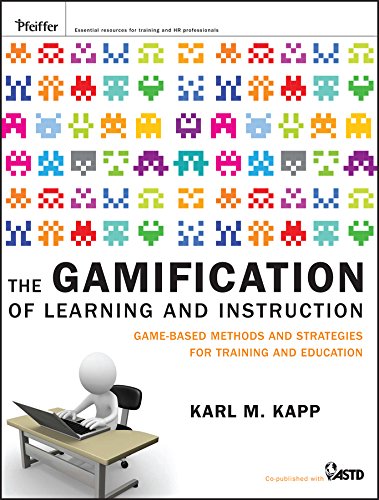The Gamification of Learning and Instruction: Game-based Methods and Strategies for Training and Education Link to heading
Summary Link to heading
“The Gamification of Learning and Instruction” by Karl M. Kapp explores how game-based methods and strategies can be effectively employed in educational and training settings. The book delves into the principles of game mechanics and how these can be used to enhance learning experiences and improve learner engagement. Kapp discusses various elements such as feedback loops, storytelling, reward systems, and challenges, explaining how they can be applied to create immersive and interactive learning environments. It also provides real-world examples and case studies to highlight the successful incorporation of gamification in education.
Review Link to heading
Karl M. Kapp’s work is a scholarly yet accessible guide that successfully bridges the gap between theory and practical application in the domain of educational gamification. One of the book’s strengths lies in its comprehensive framework that educators and trainers can easily adapt to their specific needs. The inclusion of case studies enriches the text, providing readers with practical insights into the effectiveness of gamified learning solutions. However, some critiques point out that the book occasionally leans heavily on theoretical concepts, which might overwhelm readers new to the idea of gamification.
Key Takeaways Link to heading
- Engagement through Game Mechanics: Understanding and utilizing game mechanics can significantly enhance learner engagement.
- Feedback is Critical: Incorporating timely and relevant feedback in learning processes can improve motivation and learning outcomes.
- Storytelling as a Tool: Effective use of narratives and storytelling can enrich the learning experience and make it more memorable.
- Balancing Challenges and Rewards: Carefully balancing challenges and rewards can help maintain motivation and encourage completion.
- Customization and Adaptivity: Learning programs that adapt to users’ actions and provide personalized experiences can maximize learning effectiveness.
Recommendation Link to heading
This book is highly recommended for educators, instructional designers, corporate trainers, and anyone involved in the field of learning sciences who wishes to incorporate gamification into their curricula or training programs. Its detailed analysis of game-based methods can provide valuable insights and practical strategies for leveraging gamification to create more engaging and effective learning environments.
